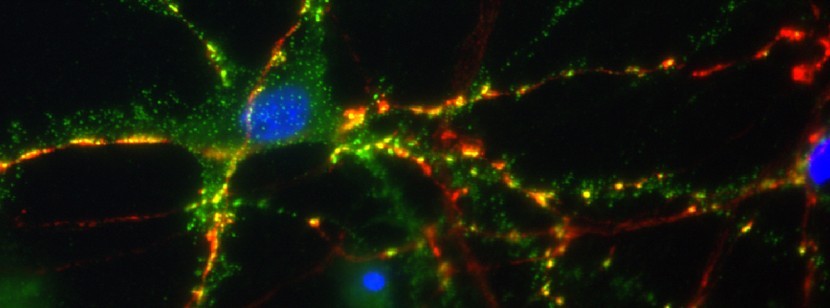On the occasion of National Epilepsy Day, Vincent Navarro, neurologist and Institut du Cerveau – ICM researcher, and Stéphanie Baulac, co-leader of the team “Genetics and physiology of hereditary epilepsy,” and the start-up Bioserenity led a discussion on research at the Institut du Cerveau – ICM during a seminar open to the public.
With 50 million people affected in the world, of which half are children, epilepsy is the most common neurological affliction after migraine. During an epileptic seizure, neurons are massively activated at the same time without warning, and their electrical activity, which is dramatically increased, can translate into various symptoms including spasms and absence seizures. The impact of the social lives of patients is considerable.
Anti-epileptic medications attempt to block seizures by reducing neuronal excitability. Pharmacoresistant patients, which make up 30% of affected individuals, do not respond either sufficiently or fully to treatment.
With seizures currently still difficult to predict, discovery of new treatments relies on establishing a better understanding of the pathology.
At the heart of the Institut du Cerveau – ICM, three research teams and a start-up study the disease at all scales, from the molecule to the entire organism.
IDENTIFY THE GENES RESPONSIBLE
The team of Eric le Guern and Stéphanie Baulac is interested in familial forms of the disorder. Their objective is to identify new genes responsible for hereditary epilepsies in order to identify key proteins and pathways implicated in initiating seizures.
A major gene, DEPDC5, responsible for several familial forms of focal epilepsies (localized to one region of the brain) was discovered by the team of Eric Le Guern and Stéphanie Baulac. This gene encodes a protein that regulates an intracellular signaling pathway (mTor pathway), which is strongly implicated in proliferation, mobility, and cell survival. Its role is different from other epilepsy genes previously identified, and this pathway is not targeted by classical medications.
Thanks to this discovery, DEPDC5 is now offered to families as a diagnostic and will allow for better therapeutic choices. Moreover, this discovery opens new therapeutic avenues for focal epilepsies resistant to treatment.
WHEN NEURONS GET CARRIED AWAY…
Stéphane Charpier’s team, in which Vincent Navarro performs his research, studies the electrical activity of the brain in normal and pathological states. These studies are performed thanks to electrophysiology at different scales of integration: from the individual neuron to network activity.
In collaboration with the clinical neurology department, the team showed that patients with focal epilepsy have high frequency activity in an epileptogenic region of the brain. These fast rhythms can be considered markers of a epileptogenic region because the rhythms are specific to the region where the seizure starts and are recorded before the seizure takes place. This also implies they could then be markers of a period of vulnerability.
This discovery is important because it allows understanding of the mechanisms upstream of the epileptic seizure. Indeed, a major question in epilepsy research is how to predict and anticipate seizures. The same team recently identified neurons that trigger “absence seizures,” which are frequent in young children and result in a temporary loss of consciousness.
…AND NO LONGER COMMUNICATE
Richard Miles’s team is focused on the dysfunction that occurs in focal epilepsy, localized in a precise region in the brain, the hippocampus (a deep region of the brain at the level of the temple). The researchers detected in this region, certain communication defects between the neurons due to a modification in a certain type of ion channel (chloride channels). Their effect is to modify signaling between the neurons which generate epileptic activity,
Furthermore, the team also developed a technique to conserve human brain tissue in culture from patients suffering from focal epilepsy in the temporal lobe. These human tissues conserve their morphological characteristics and their epileptic activity for 4 to 6 weeks. Being able to maintain these cells in culture for such a long time is a major advance because it allows studying the mechanisms of epilepsy and testing the effect of treatments in the long term.
Richard Miles’s team is also exploring the sclerosis, or neuronal death, that is at the origin of focal epilepsies. More precisely, the team is working on the role of lipids, including cholesterol, in this death. In collaboration with Nathalie Cartier, the team demonstrated the role of cholesterol in increasing epileptic activity and in neuronal death in an experimental model.
NEW TECHNOLOGIES DEVELOPED TO SERVE PATIENTS
It’s a revolution: an intelligent and connected piece of clothing, the Neuronaute, developed by Bioserenity (Pierrre Frouin,CEO) in collaboration with Michel Le Van Quyen, opens the possibility of making diagnoses, taking care of, and monitoring epileptic patients from a distance.
Consisting of a hat and a t-shirt equipped with biometric sensors, this clothing allows performing of electrophysiological tests in real time and recording brain activity for several days in a row. Thus, this significantly increases the chances of recording an epileptic seizure and therefore providing doctors with the means to establish a precise and rapid diagnosis at a distance.
The data, connected and analyzed by a smartphone application, are sent to a secure medical “cloud.” These data can be viewed at any time by the treating physician who has a strong and systematic update in order to establish the proper diagnosis which can be determined in matter of only a few weeks. Thanks to this, adequate treatment can be put in place more quickly. Moreover, the doctor can analyze the reactions of patients and adapt dosages in real time.
Furthermore, with the consent of patients, the anonymous data are made available to researchers at the Brain and Spine Institute (Institut du Cerveau – ICM) in order to generate models for different types of epilepsy and to better understand the disorder. Thanks to this technology, tracking epilepsy will become available to a larger number of patients and physicians at reduced costs.







